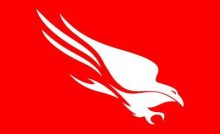Next-Generation Archiving Solution by KGS Software


As KGS celebrates its 20th anniversary, the archive specialist unveils the next-generation archiving solution, tia – the intelligent archive.
SAP Archiving
For 20 years now, KGS has been at the forefront of lean document archiving that fully integrates with the superordinate application. Previously, it was primarily SAP user companies that benefited from KGS’ proprietary archiving solution. It provided them with a tool that, in contrast to SAP’s own content server, also supports the legally compliant management of large quantities of documents without generating the financial and organizational overheads that go along with traditional DMS or ECM systems.
KGS Archive Is Now “tia”
“Our KGS designers have taken great strides, and now the time has come to present tia to the world,” says Winfried Althaus, Managing Director of KGS Software GmbH. The idea of providing a lean, almost invisible archiving software has remained unchanged. However, the new KGS solution takes this approach to the next level: tia – the intelligent archive – closes the final gap in the lifecycle of corporate documents, no matter which applications need to be connected. “In 2020 we are taking a giant step forward by introducing an intelligent archiving system that addresses the needs of major projects,” Althaus continues.
Any Application, Any Storage System
tia flexibly integrates with various IT systems. It supports any storage system and connects with any existing corporate application, whether implemented as an on-premises or cloud solution. This means that tia can archive documents from various key IT tools besides SAP, including Salesforce, Microsoft Dynamics or other specialist applications and portals. Given this design, document archiving with tia can also be used for system landscapes operated completely without SAP.
Single Point of Truth
Archiving with tia creates a Single Point of Truth (SPoT) for corporate documents. The term SPoT is mainly used in the context of data warehousing. The idea is to have a generally valid, non-redundant data pool. tia provides companies not only with a uniform archiving structure, but it also empowers them to add intelligence to their documents by making them visible independently of the source system. Among other features, the intelligent document of the future knows where it originated from, what its required retention period is, how often it is being searched for, and who is allowed to access it. This results in a vast variety of digital use cases: No matter which applications are used for daily business – be it Salesforce, SAP or others – users can easily find and access all archived documents from anywhere, provided they are authorized to do so.
Smart Technology Drives Autonomous Archiving
KGS is working on introducing even more extensive system intelligence. Autonomous archiving is being advanced to address functions such as predictive document services. Among other things, the archive of the future will be able to recognize various patterns autonomously and make forward-looking suggestions for optimization. Examples include the distribution of archived documents to corresponding storages in a manner that accounts for financial and legal criteria, or rule-based storage reorganization to maintain a constant archive size and thus prevent cost creep. “Self healing” is another important aspect. It refers to a system’s ability to identify access and certification problems and to replace or restore corrupt documents. The health status of the archive can be diagnosed at any time via dashboards, and the integrity of each individual document is transparent at all times. Finally, the archive of the future also integrates machine/deep learning features. For example, tia comes with an “auto speed valve” that automatically identifies the right migration scope for large document migrations in view of the current load on the corporate IT. As a result, migrations can be carried out with virtually no user interruption, as before – but now this process is largely autonomous, thus making the system even more efficient.
Let’s block ads! (Why?)
Recent Posts
“One Earth Summit” 2025 Held Successfully Hong Kong Fully Leverages Its Role as an International Financial Center and Leader in Green Finance
Laying a Solid Foundation for the Development of ESG Investment and Green Innovation Calling for…
The Campaign “It’s Time for EU Beef” is coming to Cebu and Manila in April
The Philippine meat industry will be shown the quality and guarantees of European beef MANILA,…
European beef will continue to play aleading role in Singapore in the coming months of 2025
"It’s Time for European Beef" is a campaign led by Provacuno and co-funded by the…
Make Waves at Galaxy Macau: Dive into a Luxurious One-Stop Ultimate Holiday Escape with the Reopening of the Grand Resort Deck
MACAU SAR - Media OutReach Newswire - 27 March 2025 - The world-class luxurious Galaxy…
Diabetes Association Unveils T-CaReMe Taipei Declaration at the Asia Diabetes International Conference
In an effort to achieve a target of 80% of patients controlling the three highs…
Li Ning Company Limited Announces 2024 Annual Results
Strengthen the “Single Brand, Multi-Categories, Diversified Channels” Strategy | Solidify Brand and Product Competitiveness, Ensure…


